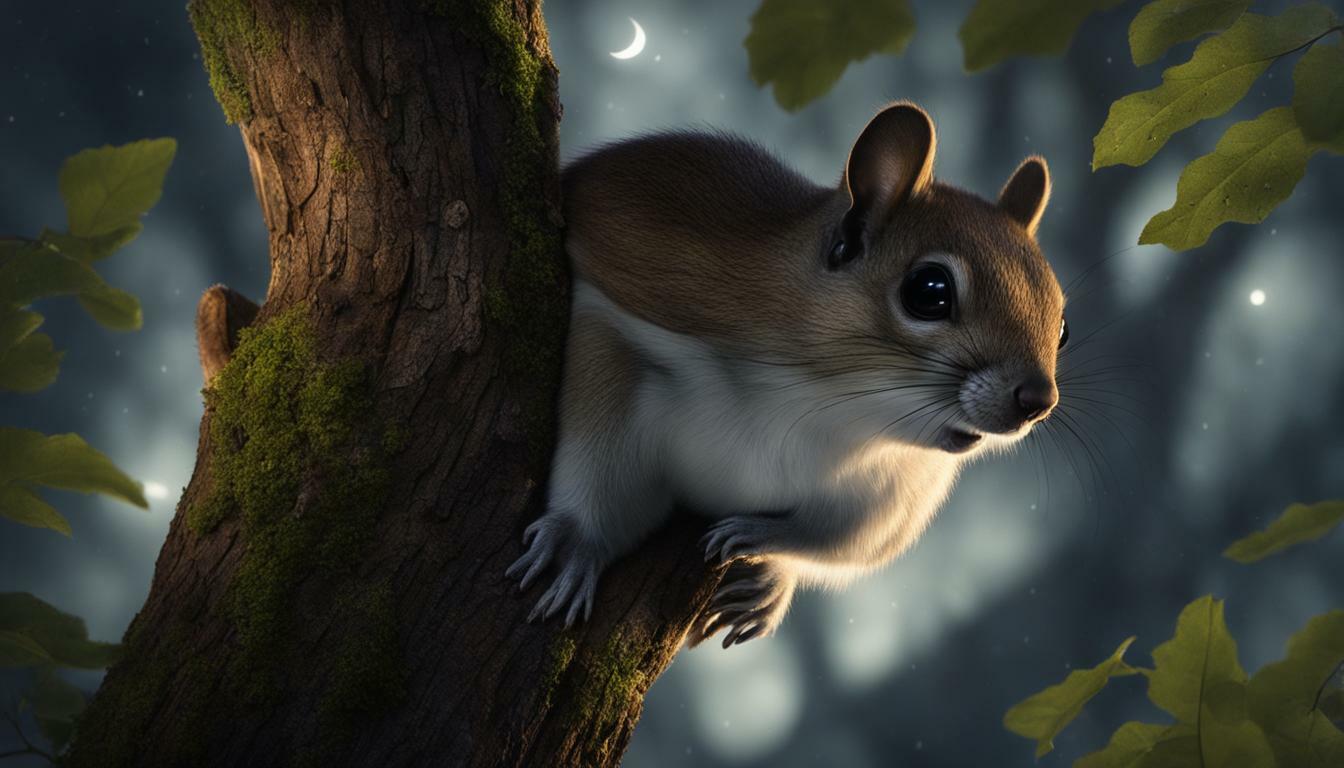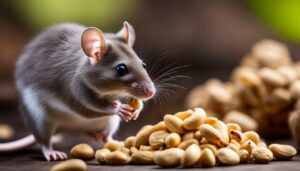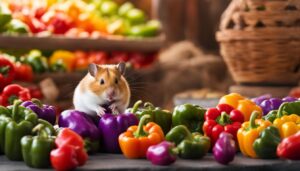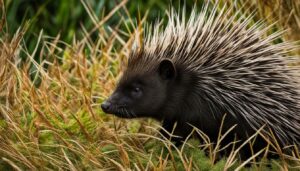If you’ve ever wondered about the presence of flying squirrels in Georgia, you’re in the right place to find out! Yes, there are flying squirrels in Georgia. These squirrels are known as the Southern Flying Squirrel, and they are found across the eastern United States in hardwood and mixed hardwood-pine forests where there are many old trees with natural cavities or woodpecker holes.
They are small in size, have a bushy tail, and have a loose fold of skin that connects their front and back limbs, which allows them to glide through the air. They are social creatures and can be found in groups, especially during the winter months when they seek shelter from the cold temperatures.
The Southern Flying Squirrel is considered common throughout its range in Georgia where favorable habitat is found.
Key Takeaways:
- Flying squirrels, specifically the Southern Flying Squirrel, can be found in Georgia.
- They prefer hardwood and mixed hardwood-pine forests with old trees and natural cavities.
- They have a unique gliding ability thanks to the loose fold of skin that connects their limbs.
- Flying squirrels are social creatures and often live in groups, especially in winter.
- The Southern Flying Squirrel is considered common in Georgia where suitable habitat exists.
Types of Flying Squirrels Found in Georgia
Georgia is home to various species of flying squirrels, with the Southern Flying Squirrel being one of the most common. These agile and acrobatic creatures are well-adapted for gliding through the forest canopy. Let’s take a closer look at the different types of flying squirrels found in Georgia:
Southern Flying Squirrel
The Southern Flying Squirrel (scientific name: Glaucomys volans) is the most prevalent species of flying squirrel in Georgia. It is small in size, measuring around 8 to 10 inches long, with a fluffy tail that helps with balance during flight. This species can be recognized by its big, round eyes and grayish-brown fur. The Southern Flying Squirrel inhabits a variety of forest types, including both deciduous and mixed hardwood-pine forests.
Other Species
While the Southern Flying Squirrel is the most common, there are other species of flying squirrels that can be found in Georgia as well. These include the Northern Flying Squirrel (Glaucomys sabrinus) and the somewhat larger and more reddish-colored Humboldt’s Flying Squirrel (Glaucomys oregonensis). However, these species are less frequently encountered compared to the Southern Flying Squirrel in the state.
Overall, the presence of multiple species of flying squirrels in Georgia adds to the diverse wildlife that can be found in the region. These remarkable creatures not only bring joy to nature enthusiasts but also play a vital role in maintaining healthy forest ecosystems.
| Flying Squirrel Species | Scientific Name | Features |
|---|---|---|
| Southern Flying Squirrel | Glaucomys volans | Small size, bushy tail, excellent gliding abilities |
| Northern Flying Squirrel | Glaucomys sabrinus | Larger size, more reddish coloration |
| Humboldt’s Flying Squirrel | Glaucomys oregonensis | Larger size, reddish-brown fur |
Flying Squirrel Habitat in Georgia
Flying squirrels in Georgia thrive in hardwood and mixed hardwood-pine forests that provide them with ample natural cavities and woodpecker holes for shelter. These unique habitats are essential for their survival. The Southern Flying Squirrel, specifically, is well-adapted to these forested areas, where they can find suitable nesting sites and abundant food sources.
These forests, with their mature trees, offer the perfect conditions for flying squirrels to build their nests. They prefer to nest in tree cavities, abandoned woodpecker holes, or even construct their own nests using leaves, twigs, and bark. The presence of these types of shelter is crucial for their protection from predators and harsh weather conditions.
Furthermore, the abundance of trees in these habitats ensures a plentiful food supply for flying squirrels. Their diet primarily consists of nuts, seeds, fruits, and insects, all of which can be found in the diverse plant life within these forests. The interconnected network of trees provides the squirrels with easy access to their food sources, allowing them to navigate and forage efficiently.
Table: Flying Squirrel Habitat Requirements
| Habitat Element | Description |
|---|---|
| Forest Type | Hardwood and mixed hardwood-pine forests |
| Nesting Sites | Natural cavities, woodpecker holes, or constructed nests |
| Food Sources | Nuts, seeds, fruits, and insects |
| Tree Population | Mature trees providing a diverse plant life |
To ensure the conservation of flying squirrels in Georgia, it is essential to protect and preserve these forested habitats. Maintaining healthy and diverse tree populations, and avoiding excessive logging or deforestation, is crucial for their survival. Additionally, creating awareness about the importance of these unique creatures and their habitat is vital for fostering a sense of responsibility towards their conservation.
By understanding and appreciating the specific habitat needs of flying squirrels in Georgia, we can work towards ensuring the long-term sustainability of their populations, allowing these delightful creatures to continue gliding through our forests for generations to come.
Gliding Abilities of Flying Squirrels
Flying squirrels in Georgia possess remarkable gliding abilities, allowing them to navigate their forested habitats with ease. These agile creatures have a unique adaptation that sets them apart from other squirrels – a loose fold of skin called a patagium. This stretchy membrane extends from their wrists to their ankles and helps them glide effortlessly through the air.
When flying squirrels want to move from tree to tree or search for food, they climb to a high branch and launch themselves into the air. They use their powerful hind legs to propel themselves forward and then spread their limbs to expand the patagium. As they glide, they can steer and adjust their trajectory by using their tail as a rudder, allowing them to precisely navigate the forest canopy.
These aerial acrobats can cover impressive distances during a single glide. Flying squirrels can glide for up to 150 feet, reaching speeds of 10 to 20 miles per hour. Their ability to glide allows them to access food sources that are not easily reachable by climbing alone, making them highly adaptable to their environment.
| Glide Distance | Glide Speed |
|---|---|
| Up to 150 feet | 10-20 miles per hour |
The gliding abilities of flying squirrels in Georgia are not only impressive but also essential for their survival. By effortlessly traversing the forest canopy, they can locate food, find suitable nesting sites, and avoid predators. Thanks to their incredible adaptation, Southern Flying Squirrels have been able to thrive in the diverse habitats of Georgia, contributing to the rich wildlife population of the region.
Social Behavior of Flying Squirrels
Flying squirrels in Georgia are social creatures, often found in groups, particularly when seeking warmth and protection during the colder winter months. These small, bushy-tailed squirrels have a unique ability to glide through the air, thanks to a loose fold of skin that stretches between their front and back limbs. This gliding membrane allows them to travel significant distances between trees, making them truly remarkable creatures of the sky.
Within their groups, flying squirrels exhibit cooperative behaviors and have a complex social structure. They communicate through a series of chirps and chattering sounds, which helps them coordinate their activities and alert others to potential dangers. Group members often share nest sites, creating communal roosting spaces where they huddle together for warmth and protection.
During the winter months, when food is scarce, flying squirrels rely on their social groups for survival. By foraging together and sharing food sources, they increase their chances of finding enough sustenance to endure the cold temperatures. Additionally, group living provides them with an advantage when it comes to predator detection, as more individuals means more eyes and ears to watch out for potential threats.
| Features of Flying Squirrels’ Social Behavior |
|---|
| Cooperative behavior: Flying squirrels work together to find food and share resources within their groups. |
| Communication: They use a variety of vocalizations, including chirps and chattering sounds, to communicate with each other. |
| Communal roosting: Flying squirrels often share nest sites, huddling together for warmth and protection. |
| Foraging in groups: By foraging together, they increase their chances of finding enough food during the winter months. |
| Predator detection: Living in groups allows for increased vigilance and detection of potential threats. |
Conservation Status of Southern Flying Squirrels in Georgia
The Southern Flying Squirrel is considered a common species throughout its range in Georgia, where favorable habitat conditions exist. These small, bushy-tailed creatures are found in hardwood and mixed hardwood-pine forests, particularly those with an abundance of old trees containing natural cavities or woodpecker holes.
One of the most remarkable features of the Southern Flying Squirrel is its ability to glide through the air. With a loose fold of skin that connects their front and back limbs, they can effortlessly navigate their way from tree to tree. This unique adaptation allows them to cover significant distances and access food sources or escape from predators.
Southern Flying Squirrels are social animals and tend to live in groups, especially during the winter months when they seek shelter from the cold temperatures. Sharing nests and huddling together helps them conserve body heat and increases their chances of survival during harsh weather conditions.
| Common Name | Scientific Name | Conservation Status |
|---|---|---|
| Southern Flying Squirrel | Glaucomys volans | Least Concern |
The conservation status of the Southern Flying Squirrel in Georgia is currently classified as “Least Concern.” This means that their population is stable and they are not facing significant threats. However, it is important to continue protecting their habitat and raising awareness about their ecological importance in order to ensure their long-term survival.
In conclusion, the Southern Flying Squirrel is a common and fascinating species found throughout Georgia. With their gliding abilities, social behavior, and preference for specific habitats, these small mammals play an important role in the ecosystems of the state. By understanding and appreciating these unique creatures, we can work towards their conservation and the preservation of their habitats for future generations.
Where to Find Flying Squirrels in Georgia
If you’re eager to spot flying squirrels in Georgia, here are some areas within the state to keep an eye out for these fascinating creatures. The Southern Flying Squirrel, known for its gliding abilities, can be found in hardwood and mixed hardwood-pine forests across the eastern United States, including Georgia. They thrive in areas with many old trees that provide natural cavities or woodpecker holes, which they use for shelter.
One popular location for observing flying squirrels in Georgia is the Chattahoochee-Oconee National Forests. This vast forested area offers a diverse range of habitats favorable to these small, social creatures. Look for them in mature oak, hickory, and pine trees, especially during the early morning or evening hours when they are most active.
Another prime spot for flying squirrel sightings is the Okefenokee National Wildlife Refuge. This unique swamp-like habitat provides an ideal environment for a variety of wildlife, including the Southern Flying Squirrel. Take a stroll along the refuge’s boardwalks or join a guided tour to increase your chances of spotting these elusive creatures.
If you prefer a more urban setting, the Atlanta area is known to have flying squirrel populations. Look for them in parks and wooded areas within the city limits, such as Piedmont Park or the Atlanta Botanical Garden. These green spaces provide an oasis for wildlife amidst the bustling city.
Table: Recommended Areas for Flying Squirrel Sightings in Georgia
| Location | Features |
|---|---|
| Chattahoochee-Oconee National Forests | Mature oak, hickory, and pine trees |
| Okefenokee National Wildlife Refuge | Swamp-like habitat |
| Atlanta parks and wooded areas | Piedmont Park, Atlanta Botanical Garden |
Remember, when searching for flying squirrels, it’s important to respect their natural habitats and observe from a distance. Stay quiet, move slowly, and use binoculars to get a closer look without disturbing these marvelous creatures. Enjoy the thrill of spotting flying squirrels in Georgia’s beautiful landscapes!
Unique Features of Southern Flying Squirrels
Southern Flying Squirrels in Georgia possess a range of unique features, from their petite size to their unmistakable gliding membrane. These small squirrels, measuring around 8 to 10 inches in length, have a fluffier appearance compared to their larger, non-gliding counterparts. Their big, innocent eyes and bushy tails add to their charm, making them a delight to observe in the wild.
Gliding Abilities
What truly sets Southern Flying Squirrels apart is their ability to glide through the air with grace and precision. This remarkable feat is made possible by a loose fold of skin called the patagium, which stretches between their front and back limbs. When they launch themselves from a tree, this gliding membrane allows them to navigate the forest canopy, effortlessly covering impressive distances of up to 150 feet.
This gliding skill is not only an evolutionary marvel but also a necessity for survival. It enables Southern Flying Squirrels to travel efficiently between trees, locate food sources, and escape from predators. Witnessing their acrobatic mid-air maneuvers is a captivating experience that showcases the agility and adaptability of these remarkable creatures.
Social Behavior and Adaptations
Southern Flying Squirrels are social animals that often live in groups, forming tight-knit communities especially during the colder months. This communal behavior provides numerous advantages, such as increased warmth and protection against predators. These adaptable squirrels are also known for their resourcefulness in finding shelter. They often occupy tree cavities or construct nests made of leaves, twigs, and grasses, ensuring a safe and cozy refuge amidst the leafy canopies.
| Unique Features of Southern Flying Squirrels | Gliding Abilities | Social Behavior and Adaptations |
|---|---|---|
| Petite size and fluffy appearance | Ability to glide through the air using a patagium | Tendency to live in groups and utilize tree cavities or nest constructions as shelter |
These unique characteristics make Southern Flying Squirrels a fascinating part of Georgia’s wildlife. Their ability to glide, socialize, and adapt to their environment showcases the incredible diversity and resilience found within our natural ecosystems. By appreciating and protecting these remarkable creatures, we can contribute to their continued presence and ensure the preservation of the delicate balance of nature in Georgia.
Ecological Importance of Flying Squirrels in Georgia
Flying squirrels play a vital role in Georgia’s ecosystems, aiding in seed dispersal and contributing to the regeneration of forests. These small and elusive creatures are known for their ability to glide through the air, thanks to a loose fold of skin that stretches from their front to back limbs. As they move from tree to tree, flying squirrels unintentionally help disperse seeds, allowing for the diversity and growth of plant species.
When flying squirrels consume fruits or nuts, they often carry them away from the parent tree to eat or store. In the process, some seeds may stick to their fur or be dropped along their flight path. This accidental transportation of seeds helps to disperse them over a wider area, increasing the chances of germination and giving rise to new trees and plants. This is particularly important in areas where there are limited opportunities for seed dispersal, such as forests with few large mammals.
Additionally, flying squirrels create pathways within the forest canopy as they glide between trees, which in turn allows for the colonization of new habitats by other animals and plants. By accessing harder-to-reach areas, flying squirrels contribute to the overall biodiversity and health of the forest ecosystem. Their presence helps to maintain the balance between different species and ensure the continuity of forest regeneration.
| Key Points: |
|---|
| Flying squirrels aid in seed dispersal |
| They unintentionally transport seeds through their feeding habits |
| Their gliding abilities create pathways for other species |
| Their presence supports the overall biodiversity of the forest |
Threats and Conservation Efforts for Flying Squirrels
While flying squirrels in Georgia are relatively common, they still face threats that require conservation efforts for their long-term survival. One of the main threats to their population is habitat loss. As urbanization and deforestation continue to encroach upon their natural habitats, the availability of suitable forests with old trees and cavities diminishes. This results in a decline in the number of trees that provide shelter and food sources for these unique creatures.
Another significant threat to flying squirrels in Georgia is the introduction of invasive species. Invasive predators, such as feral cats and raccoons, pose a danger to these squirrels and their nests. The predation pressure from these invaders can lead to a decrease in the population size of flying squirrels, affecting their overall viability.
To mitigate these threats and ensure the conservation of flying squirrels in Georgia, various organizations and initiatives are working towards protecting their population. One such effort is the conservation and restoration of suitable habitats. By preserving and creating forested areas with a diverse range of trees and suitable cavities, these organizations aim to provide safe and thriving environments for flying squirrels to thrive.
In addition to habitat preservation, education and outreach programs play a crucial role in raising awareness about the importance of flying squirrel conservation. These programs aim to educate the public about the ecological significance of flying squirrels and promote responsible land management practices that support their habitat. By involving local communities and fostering a sense of stewardship, these initiatives contribute to the long-term survival of flying squirrels in Georgia.
| Threats | Conservation Efforts |
|---|---|
| Habitat loss due to urbanization and deforestation | Preservation and creation of suitable habitats |
| Invasive species predation | Management and control of invasive predators |
| Lack of awareness and understanding | Education and outreach programs |
By addressing these threats through conservation efforts, we can ensure the long-term survival of flying squirrels in Georgia. Protecting their habitats, managing invasive species, and promoting awareness will not only benefit these fascinating creatures but also contribute to the overall biodiversity and health of Georgia’s wildlife populations.
Conclusion
In conclusion, Georgia is indeed home to flying squirrels, particularly the Southern Flying Squirrel, which can be found in suitable habitats across the state.
These small creatures, with their bushy tails and unique gliding abilities, thrive in hardwood and mixed hardwood-pine forests where there are plenty of old trees with natural cavities or woodpecker holes.
During the winter months, Southern Flying Squirrels exhibit social behavior, often living in groups to seek shelter from the cold temperatures. They are considered common throughout their range in Georgia, provided there is favorable habitat available.
Not only do these squirrels add to the biodiversity of Georgia’s wildlife, but they also play an important ecological role. They assist in seed dispersal and contribute to forest regeneration by caching and forgetting seeds in various locations.
It is crucial to protect the population of Southern Flying Squirrels in Georgia and the unique habitats they rely on. Conservation efforts aimed at preserving their natural habitats and raising awareness about the importance of these fascinating creatures are vital for their long-term survival.
FAQ
Are there flying squirrels in Georgia?
Yes, there are flying squirrels in Georgia. The Southern Flying Squirrel is found across the eastern United States, including Georgia.
What types of flying squirrels can be found in Georgia?
The Southern Flying Squirrel is the main species of flying squirrel found in Georgia.
Where do flying squirrels live in Georgia?
Flying squirrels in Georgia prefer hardwood and mixed hardwood-pine forests with old trees that have natural cavities or woodpecker holes.
How do flying squirrels glide through the air?
Flying squirrels have a loose fold of skin that connects their front and back limbs, allowing them to glide through the air.
Do flying squirrels live in groups?
Yes, flying squirrels are social creatures and can often be found living in groups, especially during the winter months when they seek shelter together.
What is the conservation status of Southern Flying Squirrels in Georgia?
Southern Flying Squirrels are considered common throughout their range in Georgia, where suitable habitat is available.
Where can I find flying squirrels in Georgia?
Flying squirrels can be found in various locations across Georgia, particularly in forests with appropriate habitat conditions.
What are some unique features of Southern Flying Squirrels?
Southern Flying Squirrels are small in size, have bushy tails, and possess a distinct gliding membrane that sets them apart from other squirrel species.
What is the ecological importance of flying squirrels in Georgia?
Flying squirrels play a vital role in seed dispersal and forest regeneration, making them ecologically important in Georgia’s ecosystems.
What are the threats faced by flying squirrels in Georgia and what conservation efforts are in place?
Flying squirrels in Georgia face threats such as habitat loss and fragmentation. Conservation efforts are focused on protecting their population through habitat preservation and public awareness.




